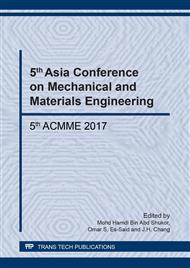p.263
p.269
p.275
p.280
p.286
p.293
p.300
p.306
p.311
Properties of Modified Lime-Based Plasters for Renewal of Historical Buildings Exposed to Accelerated Carbonation Test
Abstract:
This paper deals with determination of basic physical, mechanical, thermal and water transport properties of lime–based plasters whose composition was modified by the addition of diatomaceous earth. To eliminate possible deterioration of original lime plaster by natural weathering, the hydrophobic admixtures on the stearate and oleate basis were added into the plaster mixtures and boiled linseed oil as a painting was applied. All studied material parameters were tested after 28 days of wet curing and after exposition to accelerated carbonation. The results of examined properties of developed plasters gave promising outcomes for the use of hydrophobised materials in renewal of historical buildings. Based on the obtained data, plaster made of lime hydrate, diatomite, and combination of water repellent agents can be recommended for renovation purposes.
Info:
Periodical:
Pages:
286-290
Citation:
Online since:
November 2017
Authors:
Price:
Сopyright:
© 2017 Trans Tech Publications Ltd. All Rights Reserved
Share:
Citation:


